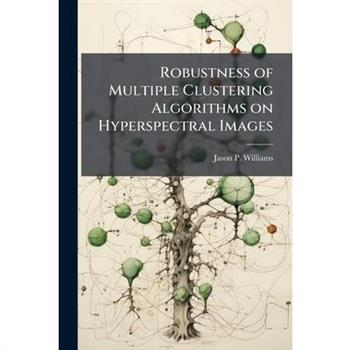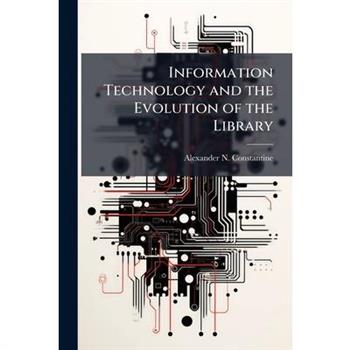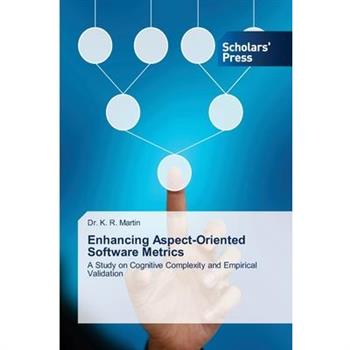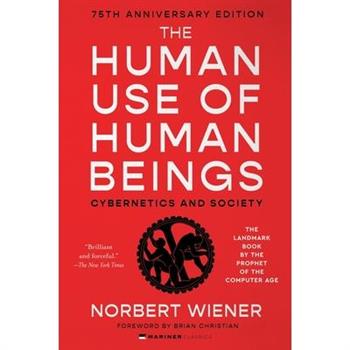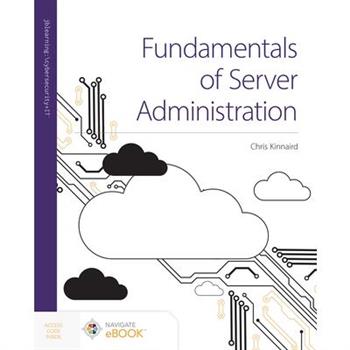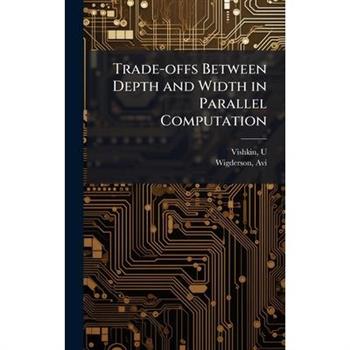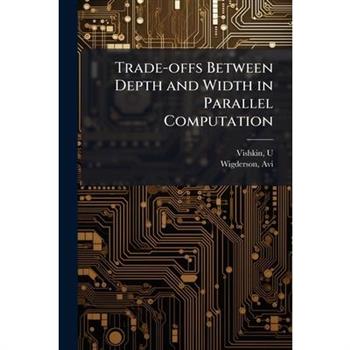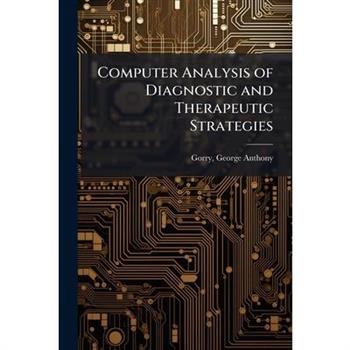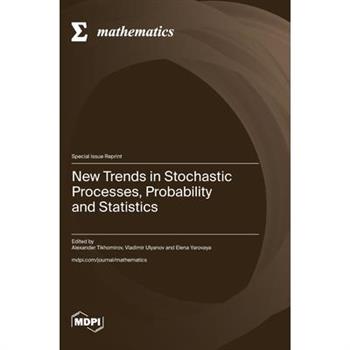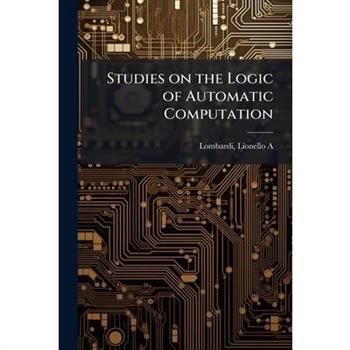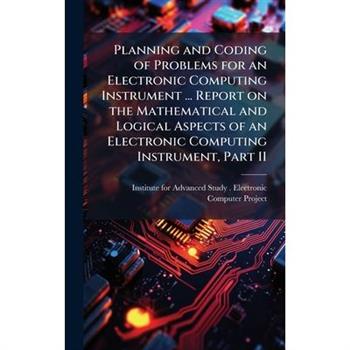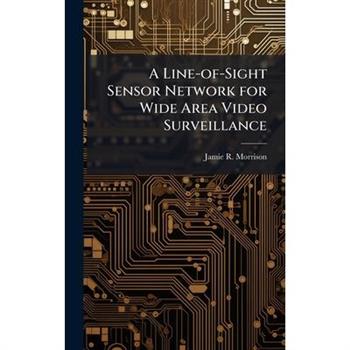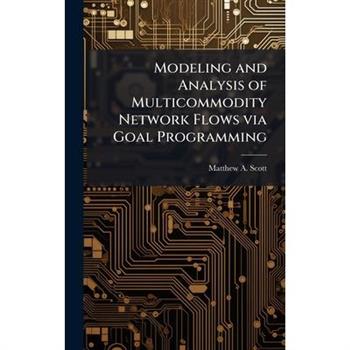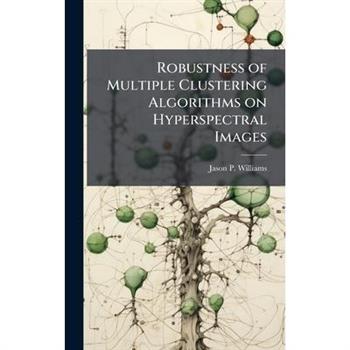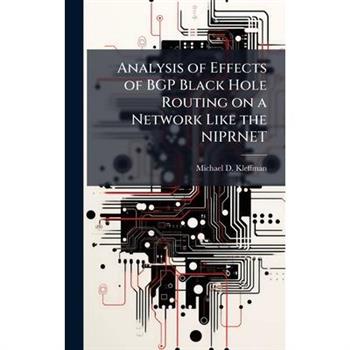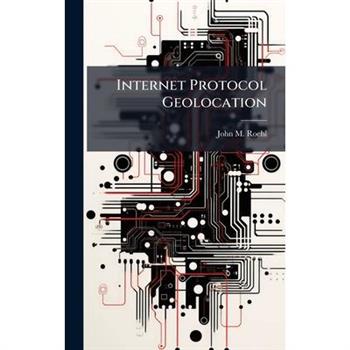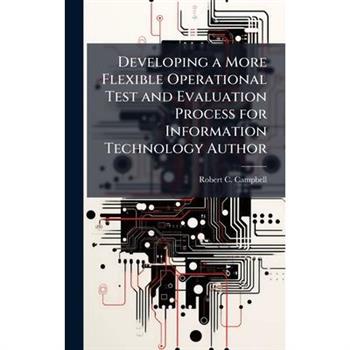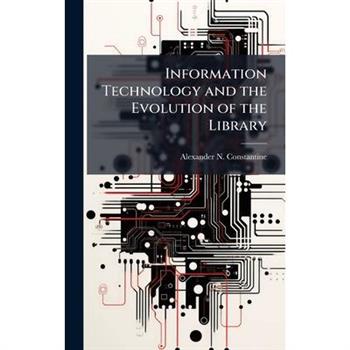Mission Impact Analysis Visualization for Enhanced Situational Awareness
This research effort examines the creation of mission impact analysis visualizations to enhance situational awareness. It focuses on using prefuse to create a visualization that allows the user to quickly understand the impact of the failure of any element needed directly or indirectly for a mission. The visualization correctly identifies the direct or indirect impact on physical requirements such as network links and servers as well as non-physical elements such as the generation of a report, or ability to perform a task. The visualization provides an overview of the situation, as well as including enhancements to allow for greater detail on any element to be viewed. The result of this research is the foundation for a tool to allow commanders and others, at a glance, to understand the scope of mission impact when an outage occurs.This work has been selected by scholars as being culturally important, and is part of the knowledge base of civilization as we know it. This work was reproduced from the original artifact, and remains as true to the original work as possible. Therefore, you will see the original copyright references, library stamps (as most of these works have been housed in our most important libraries around the world), and other notations in the work.This work is in the public domain in the United States of America, and possibly other nations. Within the United States, you may freely copy and distribute this work, as no entity (individual or corporate) has a copyright on the body of the work.As a reproduction of a historical artifact, this work may contain missing or blurred pages, poor pictures, errant marks, etc. Scholars believe, and we concur, that this work is important enough to be preserved, reproduced, and made generally available to the public. We appreciate your support of the preservation process, and thank you for being an important part of keeping this knowledge alive and relevant.
Robustness of Multiple Clustering Algorithms on Hyperspectral Images
By clustering data into homogeneous groups, analysts can accurately detect anomalies within an image. This research was conducted to determine the most robust algorithm and settings for clustering hyperspectral images. Multiple images were analyzed, employing a variety of clustering algorithms under numerous conditions to include distance measurements for the algorithms and prior data reduction techniques. Various clustering algorithms were employed, including a hierarchical method, ISODATA, K-means, and X-means, and were used on a simple two dimensional dataset in order to discover potential problems with the algorithms. Subsequently, the lessons learned were applied to a subset of a hyperspectral image with known clustering, and the algorithms were scored on how well they performed as the number of outliers was increased. The best algorithm was then used to cluster each of the multiple images using every variable combination tested, and the clusters were input into two global anomaly detectors to determine and validate the most robust algorithm settings.This work has been selected by scholars as being culturally important, and is part of the knowledge base of civilization as we know it. This work was reproduced from the original artifact, and remains as true to the original work as possible. Therefore, you will see the original copyright references, library stamps (as most of these works have been housed in our most important libraries around the world), and other notations in the work.This work is in the public domain in the United States of America, and possibly other nations. Within the United States, you may freely copy and distribute this work, as no entity (individual or corporate) has a copyright on the body of the work.As a reproduction of a historical artifact, this work may contain missing or blurred pages, poor pictures, errant marks, etc. Scholars believe, and we concur, that this work is important enough to be preserved, reproduced, and made generally available to the public. We appreciate your support of the preservation process, and thank you for being an important part of keeping this knowledge alive and relevant.
Internet Protocol Geolocation
Internet Protocol Geolocation (IP Geolocation), the process of determining the approximate geographic location of an IP addressable node, has proven useful in a wide variety of commercial applications. Commercial applications of IP Geolocation include market research, redirection for performance enhancement, restricting content, and combating fraud. The potential for military applications include securing remote access via geographic authentication, intelligence collection, and cyber attack attribution.This work has been selected by scholars as being culturally important, and is part of the knowledge base of civilization as we know it. This work was reproduced from the original artifact, and remains as true to the original work as possible. Therefore, you will see the original copyright references, library stamps (as most of these works have been housed in our most important libraries around the world), and other notations in the work.This work is in the public domain in the United States of America, and possibly other nations. Within the United States, you may freely copy and distribute this work, as no entity (individual or corporate) has a copyright on the body of the work.As a reproduction of a historical artifact, this work may contain missing or blurred pages, poor pictures, errant marks, etc. Scholars believe, and we concur, that this work is important enough to be preserved, reproduced, and made generally available to the public. We appreciate your support of the preservation process, and thank you for being an important part of keeping this knowledge alive and relevant.
Automatic Target Recognition User Interface Tool
A computer tool to aid in selecting the best Automatic Target Recognition (ATR) algorithm is developed. The program considers many quantifiers, accepts user-defined parameters, allows for changes in the operational environment and presents results in a meaningful way. It is written for Microsoft Excel. An ATR algorithm assigns a class label to a recognized target. General designations can include "Friend" and "Foe." The error of designating "Friend" as "Foe" as well as "Foe" as "Friend" comes with a high cost. Studying each algorithm's error can minimize this cost. Receiver Operating Characteristic (ROC) curves provide only information on the probabilities given a system state of declaring up to three class labels: "True," "False" or "Unknown." Other quantifiers, including an alternate ROC curve, are developed in this study to provide information on the probability of a system state given any of multiple declarations, which is more useful to the user. Sensitivity to prior probabilities, suggestions for user-defined parameters and areas for future research are identified as the User Interface Tool is described in detail in this thesis.This work has been selected by scholars as being culturally important, and is part of the knowledge base of civilization as we know it. This work was reproduced from the original artifact, and remains as true to the original work as possible. Therefore, you will see the original copyright references, library stamps (as most of these works have been housed in our most important libraries around the world), and other notations in the work.This work is in the public domain in the United States of America, and possibly other nations. Within the United States, you may freely copy and distribute this work, as no entity (individual or corporate) has a copyright on the body of the work.As a reproduction of a historical artifact, this work may contain missing or blurred pages, poor pictures, errant marks, etc. Scholars believe, and we concur, that this work is important enough to be preserved, reproduced, and made generally available to the public. We appreciate your support of the preservation process, and thank you for being an important part of keeping this knowledge alive and relevant.
Information Technology and the Evolution of the Library
The purpose of this research is to examine the current state of the practice of information technology use among academic and research libraries in order to gain insight into the level of maturity of various emerging technologies such as the Institutional Repository (IR) to be used to provide descriptive guidance and context to other institutions considering them for application. This research uses a case study methodology involving a single case design with multiple units of analysis, and draws evidence from individual interviews of research and education libraries chosen from a range of sizes, foci, and jurisdictions.This work has been selected by scholars as being culturally important, and is part of the knowledge base of civilization as we know it. This work was reproduced from the original artifact, and remains as true to the original work as possible. Therefore, you will see the original copyright references, library stamps (as most of these works have been housed in our most important libraries around the world), and other notations in the work.This work is in the public domain in the United States of America, and possibly other nations. Within the United States, you may freely copy and distribute this work, as no entity (individual or corporate) has a copyright on the body of the work.As a reproduction of a historical artifact, this work may contain missing or blurred pages, poor pictures, errant marks, etc. Scholars believe, and we concur, that this work is important enough to be preserved, reproduced, and made generally available to the public. We appreciate your support of the preservation process, and thank you for being an important part of keeping this knowledge alive and relevant.
Leveraging ITIL/ITSM Into Network Operations
Air Force Network Operations (AFNetOps) controls the AF portion of the Global Information Grid (GIG). In order to do this efficiently, the USAF had to change the way it was operating and go away Centralized Control. Decentralized execution towards Centralized Control, Centralized Execution. This was done largely in part because the USAF was struggling in protection of critical information and the networks interconnection all of our installations. In the late 80's the United Kingdom created Information Technology Infrastructure Library (ITIL) whose purpose is to provide a practical no- nonsense framework for identifying, planning, delivering and supporting IT services for a business. Over the years, ITIL has become the defacto standard for all IT Service Management. In consolidating our Network Operations and Security Center operations, the USAF decided to take steps towards incorporating this standard. This research discovered how well ITSM was integrated into our AFNetOps posture and the collaborative efforts to standardize change management for the benefit of the Air Force. If indeed the USAF is to become another ITIL success story, it resides with the IT Service Management framework of guiding our NetOps.This work has been selected by scholars as being culturally important, and is part of the knowledge base of civilization as we know it. This work was reproduced from the original artifact, and remains as true to the original work as possible. Therefore, you will see the original copyright references, library stamps (as most of these works have been housed in our most important libraries around the world), and other notations in the work.This work is in the public domain in the United States of America, and possibly other nations. Within the United States, you may freely copy and distribute this work, as no entity (individual or corporate) has a copyright on the body of the work.As a reproduction of a historical artifact, this work may contain missing or blurred pages, poor pictures, errant marks, etc. Scholars believe, and we concur, that this work is important enough to be preserved, reproduced, and made generally available to the public. We appreciate your support of the preservation process, and thank you for being an important part of keeping this knowledge alive and relevant.
Implementation of Speech Recognition Software for Text Processing
In recent years, information technology has advanced at an incredible pace. One new technology that has recently become available to the average computer user is speech recognition software for text processing. The rationale behind implementing such new technologies is often to gain productivity improvements associated with the substitution of machinery for labor. However, the literature shows little direct evidence of a positive relationship between information technology investment and subsequent productivity benefits. This thesis reports on the examination into the productivity implications of implementing speech recognition software in a text-processing environment. More specifically, research was conducted to compare text processing speeds and error rates using speech recognition software versus the keyboard and mouse. Of interest was the time required to input and proofread text processing tasks as well as the number of errors generated using both methods of text input. The empirical data offer somewhat mixed results. While users initially entered text faster using speech recognition software (p greater than .05), they generated more errors and consequently performed proofreading and error corrections slower using speech. These results suggest that, in terms of accurate text processing, speech recognition software is still not a practical alternative to the keyboard. Therefore, implementation of speech recognition software is unlikely to result in any gains in productivity that would serve to justify its cost.This work has been selected by scholars as being culturally important, and is part of the knowledge base of civilization as we know it. This work was reproduced from the original artifact, and remains as true to the original work as possible. Therefore, you will see the original copyright references, library stamps (as most of these works have been housed in our most important libraries around the world), and other notations in the work.This work is in the public domain in the United States of America, and possibly other nations. Within the United States, you may freely copy and distribute this work, as no entity (individual or corporate) has a copyright on the body of the work.As a reproduction of a historical artifact, this work may contain missing or blurred pages, poor pictures, errant marks, etc. Scholars believe, and we concur, that this work is important enough to be preserved, reproduced, and made generally available to the public. We appreciate your support of the preservation process, and thank you for being an important part of keeping this knowledge alive and relevant.
Dynamic Protocol Reverse Engineering
Round trip engineering of software from source code and reverse engineering of software from binary files have both been extensively studied and the state-of-practice have documented tools and techniques. Forward engineering of protocols has also been extensively studied and there are firmly established techniques for generating correct protocols. While observation of protocol behavior for performance testing has been studied and techniques established, reverse engineering of protocol control ow from observations of protocol behavior has not received the same level of attention. State-of-practice in reverse engineering the control ow of computer network protocols is comprised of mostly ad hoc approaches. We examine state-of-practice tools and techniques used in three open source projects: Pidgin, Samba, and rdesktop. We examine techniques proposed by computational learning researchers for grammatical inference. We propose to extend the state-of-art by inferring protocol control ow using grammatical inference inspired techniques to reverse engineer automata representations from captured data ows. We present evidence that grammatical inference is applicable to the problem domain under consideration.This work has been selected by scholars as being culturally important, and is part of the knowledge base of civilization as we know it. This work was reproduced from the original artifact, and remains as true to the original work as possible. Therefore, you will see the original copyright references, library stamps (as most of these works have been housed in our most important libraries around the world), and other notations in the work.This work is in the public domain in the United States of America, and possibly other nations. Within the United States, you may freely copy and distribute this work, as no entity (individual or corporate) has a copyright on the body of the work.As a reproduction of a historical artifact, this work may contain missing or blurred pages, poor pictures, errant marks, etc. Scholars believe, and we concur, that this work is important enough to be preserved, reproduced, and made generally available to the public. We appreciate your support of the preservation process, and thank you for being an important part of keeping this knowledge alive and relevant.
The de Gruyter Handbook on Law and Digital Technologies
The De Gruyter Handbook on Law and Digital Technologies provides a comprehensive, accessible and thought-provoking guide to the current and future regulation of digital technologies. It addresses key legal challenges such as reconceptualizing crucial, deep-rooted notions, including those of person, autonomy, democracy, the rule of law, sovereignty, constitutionalism and governance. The handbook proposes critical explorations of the potential impact of digital technologies on new and traditional forms of governance and regulation across different and competitive normative perspectives such as law, economy, social norms and legal design. In this framework, it addresses the societal transformations brought about by digital technologies, the legal means for regulating the field, and the impact of governance in areas such as fintech, sustainability, outer space, or healthcare.
Cloud Application Security Essentials with Azure
Modern application development is deeply intertwined with cloud computing, making robust application security an absolute imperative for every professional. As applications increasingly leverage cloud components and services like Azure, understanding the security implications for both your app architecture and its underlying platform is critical to prevent breaches and ensure system integrity. This book starts by defining modern app security, outlining crucial security assertions and security metrics for cloud environments. It then dives into different clouds, including private vs. public cloud models and their impact on app security requirements, highlighting Azure examples and confidential computing. You will explore fundamental blockchain concepts and their relevance, then master app identity, app keys, and delegation concepts. This book aims to define metrics to help evaluate the application security level and establish security as a feature of the application.Upon completing this book, you will possess a strong foundational and practical understanding of how to secure modern applications across diverse cloud landscapes. You will be well-prepared to design, implement, and maintain secure applications, effectively mitigating risks and contributing confidently to your organization's cloud security posture, and evaluate it in other cases.WHAT YOU WILL LEARN● Explore common concepts related to security - using private clouds, encryption, authorization, etc. ● Define modern app security assertions, architecture, and cloud metrics.● Implement cloud app identity, app keys, and delegation securely.● Integrate app architectures, cloud services, and blockchain for security● Apply robust data encryption, Azure support, and secure key access.● Understand app monetization, blockchain economics, and security implications.WHO THIS BOOK IS FORThis book is ideal for application developers, owners, consumers, store owners, and cloud architects who want to learn about application security in cloud environments. It aims to equip these professionals with the knowledge to estimate and enhance an application's security level.
Enhancing Aspect-Oriented Software Metrics
Software development is a complex process that requires precise measurement techniques to assess quality, maintainability, and efficiency. Traditional object-oriented programming (OOP) metrics, while useful, struggle to fully capture the crosscutting concerns in modern software systems. Aspect-Oriented Programming (AOP) addresses these limitations by modularizing crosscutting concerns (e.g., logging, security, transactions) into reusable aspects. However, measuring the complexity and maintainability of AOP systems remains challenging.This research focuses on empirically validating coupling metrics in AOP, introducing cognitive-weighted versions of existing metrics to better reflect human comprehension effort. The study also employs fuzzy logic to assess overall complexity, providing a more nuanced evaluation of aspect-oriented software.This research aims to: - Enhance existing AOP metrics by incorporating cognitive weights. - Empirically validate these metrics through controlled experiments. - Use fuzzy logic to compute an aggregated complexity score.
The Human Use of Human Beings
For the 75th anniversary, a new edition of The Human Use of Human Beings--the landmark book that delves into the relationship between humans and computers, and presciently anticipates many contemporary dilemmas surrounding AI technology. With a new introduction by Brian Christian, author of the bestselling Algorithms to Live By and The Alignment Problem.In 1950, mathematician-philosopher Norbert Wiener ended this classic book on the place of machines in society with a warning: "We shall never receive the right answers to our questions unless we ask the right questions.... The hour is very late, and the choice of good and evil knocks at our door."Wiener, the founder of the science of cybernetics--the study of the relationship between computers and the human nervous system--was widely mislabeled as an advocate for the automation of human life. As The Human Use for Human Beings reveals, his vision was much more complex and interesting, and is more relevant in today's world of AI than anyone could have anticipated.In his new introduction, Brian Christian aptly calls Wiener the "progenitor of contemporary AI-safety discourse." Wiener hoped that machines would release people from relentless and repetitive drudgery to achieve more creative pursuits, yet he anticipated the danger of dehumanizing and displacement. His pioneering views on the human-machine relationship as a "communicative process" are only more crucial now, as we carry in our pockets AI devices that we can literally speak to. His prescient warnings illuminate our contemporary relationships with language, art, and even social media.The Human Use of Human Beings examines the implications of cybernetics for education, law, language, science, technology, as Wiener anticipates the enormous impact--in effect, a third industrial revolution--that the computer has had on our lives.
Fundamentals of Server Administration
As companies are increasingly moving IT resources to the cloud with technologies such as Amazon AWS and Microsoft Azure, there is an emerging knowledge gap for network administrators who still must deploy and manage on-site servers. Fundamentals of Server Administration provides both students and professionals with the knowledge and skills needed to administer servers in both on-premise and cloud-based environments. It covers topics and concepts for Windows and Linux server environments and includes graphical, as well as console-based administration activities. Fundamentals of Server Administration aligns to the CompTIA Server+ (SKO-005) certification as well as the CompTIA Network Infrastructure Professional stackable certification for those students who also obtain the Network+ certification. It is an invaluable tool for both students and professionals seeking the essential skills needed to meet today's rising demand for a highly skilled IT workforce.A clear focus on best practices for both on-premise and cloud-based deploymentsProvides a vendor-agnostic approach that addresses core server administration concepts for both Windows and Linux server environmentsCovers graphical as well as console-based server administration (i.e., PowerShell and Bash) activitiesServes as the first step in preparing students for the CompTIA Server+ certification examAvailable with Cybersecurity Cloud Labs, providing immersive mock IT infrastructures where students can practice and learn foundational skills
Bioinformatics and Computational Biology
This book constitutes the refereed proceedings of the 17th International Conference on Bioinformatics and Computational Biology, BICOB 2025, held in San Francisco, CA, USA, on March 17, 2025.The 18 full papers presented in this book were carefully reviewed and selected from 38 submissions.The papers cover a wide range of bioinformatics and computational biology topics, including bioinformatics algorithms, genomics, machine learning applications in bioinformatics, and medical informatics.
Advances in Computational Mathematics and Applied Mathematics
The reprint contains 16 articles that have been published in the Special Issue "Advances in Computational Mathematics and Applied Mathematics". They cover a wide range of topics in the closely related fields of computational mathematics and applied mathematics, with keywords including nonlinear Schr繹dinger equations, Klein-Gordon equations, impulsive neutral differential equations, Kepler's equation, parabolic heat equations, nonlinear monotone equations, fractional differential equations, elliptic curves, inverse and ill-posed problems, the impulsive Runge-Kutta method, the Steffensen-type method without memory, reinforcement learning, the constrained Markov decision process, time series, financial mathematics, biomathematics, etc. Most research in the field of computational mathematics focuses on numerical analysis and scientific calculation methods, such as interpolation and approximation, numerical methods of differential equations, numerical integration, matrix computation, and linear equation systems. In applied mathematics, most research focuses on its practical applications in various fields, such as physics, engineering, finance, biology, and medicine. We hope that this reprint will be interesting and useful for those working in the areas of computational mathematics, applied mathematics, and artificial intelligence, in addition to those who have a mathematical background and want to become more familiar with recent advances in computational mathematics and applied mathematics, which have been widely applied in many fields of science and engineering.
Future-Proof
Mastering Career Adaptabilities, self improvement, mindset, workplace behavoir, seeing opportunities in the technological changes, teaching and guidance
Future-Proof
Mastering Career Adaptabilities, self improvement, mindset, workplace behavoir, seeing opportunities in the technological changes, teaching and guidance
Compilation Techniques for VLIW Architectures
"Compilation Techniques for VLIW Architectures" explores the intricate methods of optimizing code for Very Long Instruction Word (VLIW) processors. This technical study delves into the specific challenges and solutions encountered when translating high-level programming languages into efficient machine code for parallel execution on VLIW platforms.Ideal for computer scientists, compiler designers, and those interested in advanced computer architecture, this work provides insights into maximizing the performance of VLIW processors through sophisticated compilation strategies. It offers a valuable resource for understanding the principles behind parallel processing and compiler optimization.This work has been selected by scholars as being culturally important, and is part of the knowledge base of civilization as we know it. This work was reproduced from the original artifact, and remains as true to the original work as possible. Therefore, you will see the original copyright references, library stamps (as most of these works have been housed in our most important libraries around the world), and other notations in the work.This work is in the public domain in the United States of America, and possibly other nations. Within the United States, you may freely copy and distribute this work, as no entity (individual or corporate) has a copyright on the body of the work.As a reproduction of a historical artifact, this work may contain missing or blurred pages, poor pictures, errant marks, etc. Scholars believe, and we concur, that this work is important enough to be preserved, reproduced, and made generally available to the public. We appreciate your support of the preservation process, and thank you for being an important part of keeping this knowledge alive and relevant.
Studies on the Logic of Automatic Computation
"Studies on the Logic of Automatic Computation: Incremental Data Assimilation in Man-computer Systems" explores the theoretical underpinnings of automated computing processes. Lionello A. Lombardi delves into the logical structures that enable machines to perform complex calculations and data processing. This work examines the crucial role of incremental data assimilation, focusing on how humans and computers can effectively collaborate to enhance system performance. Originally published in 1962, this study provides valuable insights into the early development of computer logic and human-computer interaction. It remains relevant for researchers and historians of computer science, offering a foundational understanding of the principles that drive modern computational systems. The book's enduring appeal lies in its detailed analysis of the logical frameworks necessary for efficient automatic computation.This work has been selected by scholars as being culturally important, and is part of the knowledge base of civilization as we know it. This work was reproduced from the original artifact, and remains as true to the original work as possible. Therefore, you will see the original copyright references, library stamps (as most of these works have been housed in our most important libraries around the world), and other notations in the work.This work is in the public domain in the United States of America, and possibly other nations. Within the United States, you may freely copy and distribute this work, as no entity (individual or corporate) has a copyright on the body of the work.As a reproduction of a historical artifact, this work may contain missing or blurred pages, poor pictures, errant marks, etc. Scholars believe, and we concur, that this work is important enough to be preserved, reproduced, and made generally available to the public. We appreciate your support of the preservation process, and thank you for being an important part of keeping this knowledge alive and relevant.
Computer Analysis of Diagnostic and Therapeutic Strategies
Computer Analysis of Diagnostic and Therapeutic Strategies explores the application of computer science to medical decision-making. Published in 1969, this work provides early insights into the potential of computers to aid in the analysis of complex medical problems. It discusses techniques for using computers to evaluate diagnostic procedures and therapeutic options. Authored by George Anthony Gorry, a pioneer in medical informatics, this book offers a valuable historical perspective on the intersection of computer science and medicine. While the specific technologies discussed may be outdated, the underlying principles remain relevant to contemporary efforts to improve healthcare through the use of data and algorithms. This book is a must-read for anyone interested in the history of medical informatics and the evolving role of computers in healthcare.This work has been selected by scholars as being culturally important, and is part of the knowledge base of civilization as we know it. This work was reproduced from the original artifact, and remains as true to the original work as possible. Therefore, you will see the original copyright references, library stamps (as most of these works have been housed in our most important libraries around the world), and other notations in the work.This work is in the public domain in the United States of America, and possibly other nations. Within the United States, you may freely copy and distribute this work, as no entity (individual or corporate) has a copyright on the body of the work.As a reproduction of a historical artifact, this work may contain missing or blurred pages, poor pictures, errant marks, etc. Scholars believe, and we concur, that this work is important enough to be preserved, reproduced, and made generally available to the public. We appreciate your support of the preservation process, and thank you for being an important part of keeping this knowledge alive and relevant.
Trade-offs Between Depth and Width in Parallel Computation
This work explores the trade-offs between depth and width in parallel computation. It delves into the fundamental limitations and possibilities when designing parallel algorithms, examining how the degree of parallelism (width) relates to the computational time (depth). The study is highly relevant to theoretical computer science and provides insights applicable to algorithm design and analysis. It presents a rigorous examination of computational complexity within parallel systems, offering a valuable resource for researchers and practitioners interested in optimizing parallel performance.This work has been selected by scholars as being culturally important, and is part of the knowledge base of civilization as we know it. This work was reproduced from the original artifact, and remains as true to the original work as possible. Therefore, you will see the original copyright references, library stamps (as most of these works have been housed in our most important libraries around the world), and other notations in the work.This work is in the public domain in the United States of America, and possibly other nations. Within the United States, you may freely copy and distribute this work, as no entity (individual or corporate) has a copyright on the body of the work.As a reproduction of a historical artifact, this work may contain missing or blurred pages, poor pictures, errant marks, etc. Scholars believe, and we concur, that this work is important enough to be preserved, reproduced, and made generally available to the public. We appreciate your support of the preservation process, and thank you for being an important part of keeping this knowledge alive and relevant.
Planning and Coding of Problems for an Electronic Computing Instrument ... Report on the Mathematical and Logical Aspects of an Electronic Computing Instrument, Part II
Planning and Coding of Problems for an Electronic Computing Instrument is a foundational document in the history of computer science. This report, stemming from the Electronic Computer Project at the Institute for Advanced Study in Princeton, details the mathematical and logical underpinnings of early electronic computing. A vital resource for understanding the conceptual groundwork of modern computing, it offers insights into the challenges and innovations of the pioneers in the field.Part II of the report delves into the specifics of problem-solving and coding for these novel machines. This historical document is invaluable for researchers, historians of science, and anyone interested in the intellectual origins of the digital age. It captures a pivotal moment when mathematics, logic, and engineering converged to create the first electronic computers.This work has been selected by scholars as being culturally important, and is part of the knowledge base of civilization as we know it. This work was reproduced from the original artifact, and remains as true to the original work as possible. Therefore, you will see the original copyright references, library stamps (as most of these works have been housed in our most important libraries around the world), and other notations in the work.This work is in the public domain in the United States of America, and possibly other nations. Within the United States, you may freely copy and distribute this work, as no entity (individual or corporate) has a copyright on the body of the work.As a reproduction of a historical artifact, this work may contain missing or blurred pages, poor pictures, errant marks, etc. Scholars believe, and we concur, that this work is important enough to be preserved, reproduced, and made generally available to the public. We appreciate your support of the preservation process, and thank you for being an important part of keeping this knowledge alive and relevant.
Shadow Codes
Dive deep into the enigmatic world of cyber espionage with "Shadow Codes: The Master Spy of the Digital Age." Tailored for tech enthusiasts, cybersecurity students, or simply the curious, this book unravels the mysteries of digital spying, making it an essential read for anyone eager to understand this shadowy realm.Inside the Book: Begin your exploration by grasping the fundamentals of cyber spying and its significant impact on our digital lives.Travel back in time to the roots of cyber espionage, witnessing its evolution from basic hacking to a tool of state-level intelligence.Learn what it takes to become a master in the digital espionage arena, including the necessary skills, mindset, and ethical dilemmas.Uncover the extensive toolbox of cyber spies, ranging from cutting-edge software to psychological manipulation techniques.Discover the various faces of cyber espionage, from solitary hackers to organized government entities.Learn the devious tricks and strategies cyber spies employ to deceive and extract critical information.Find out who typically falls under the radar of cyber spies and why these individuals or entities are targeted.Delve into the methodologies used by cyber spies to collect and analyze data.Gain insights into the geopolitical landscape of cyber espionage, where nations vie for digital dominance.Venture into the dark web, a pivotal platform in the realm of digital espionage.Why Read "Shadow Codes"? Grasp the Intricacies of Digital Espionage: Gain a comprehensive understanding of the role and impact of cyber spying in today's interconnected world.Expand Your Knowledge: Whether you're a seasoned professional or a curious novice, this book provides a wealth of knowledge on the secret workings of digital espionage.Stay Secure and Informed: Equip yourself with the knowledge of how cyber spies operate, enhancing your ability to protect against digital threats.Embark on a journey through the covert world of cyber spying with "Shadow Codes." This book is your guide to understanding the digital battlefield that shapes our world today.
Trade-offs Between Depth and Width in Parallel Computation
This work explores the trade-offs between depth and width in parallel computation. It delves into the fundamental limitations and possibilities when designing parallel algorithms, examining how the degree of parallelism (width) relates to the computational time (depth). The study is highly relevant to theoretical computer science and provides insights applicable to algorithm design and analysis. It presents a rigorous examination of computational complexity within parallel systems, offering a valuable resource for researchers and practitioners interested in optimizing parallel performance.This work has been selected by scholars as being culturally important, and is part of the knowledge base of civilization as we know it. This work was reproduced from the original artifact, and remains as true to the original work as possible. Therefore, you will see the original copyright references, library stamps (as most of these works have been housed in our most important libraries around the world), and other notations in the work.This work is in the public domain in the United States of America, and possibly other nations. Within the United States, you may freely copy and distribute this work, as no entity (individual or corporate) has a copyright on the body of the work.As a reproduction of a historical artifact, this work may contain missing or blurred pages, poor pictures, errant marks, etc. Scholars believe, and we concur, that this work is important enough to be preserved, reproduced, and made generally available to the public. We appreciate your support of the preservation process, and thank you for being an important part of keeping this knowledge alive and relevant.
Computer Analysis of Diagnostic and Therapeutic Strategies
Computer Analysis of Diagnostic and Therapeutic Strategies explores the application of computer science to medical decision-making. Published in 1969, this work provides early insights into the potential of computers to aid in the analysis of complex medical problems. It discusses techniques for using computers to evaluate diagnostic procedures and therapeutic options. Authored by George Anthony Gorry, a pioneer in medical informatics, this book offers a valuable historical perspective on the intersection of computer science and medicine. While the specific technologies discussed may be outdated, the underlying principles remain relevant to contemporary efforts to improve healthcare through the use of data and algorithms. This book is a must-read for anyone interested in the history of medical informatics and the evolving role of computers in healthcare.This work has been selected by scholars as being culturally important, and is part of the knowledge base of civilization as we know it. This work was reproduced from the original artifact, and remains as true to the original work as possible. Therefore, you will see the original copyright references, library stamps (as most of these works have been housed in our most important libraries around the world), and other notations in the work.This work is in the public domain in the United States of America, and possibly other nations. Within the United States, you may freely copy and distribute this work, as no entity (individual or corporate) has a copyright on the body of the work.As a reproduction of a historical artifact, this work may contain missing or blurred pages, poor pictures, errant marks, etc. Scholars believe, and we concur, that this work is important enough to be preserved, reproduced, and made generally available to the public. We appreciate your support of the preservation process, and thank you for being an important part of keeping this knowledge alive and relevant.
New Trends in Stochastic Processes, Probability and Statistics
This reprint contains all of the articles that were accepted and published in the Special Issue of Mathematics titled "New Trends in Stochastic Processes, Probability and Statistics". This Special Issue was devoted to an important aspect of modern applied statistics, the identification of random process parameters and the development of non-parametric statistical methods.It is hoped that this reprint will prove useful to those working in modern areas of probability theory, stochastic processes, and mathematical statistics.
Pipe Flow
This Special Issue presents cutting-edge research and practical advancements in pipe flow, covering both fundamental fluid dynamics and real-world engineering applications. With contributions from leading experts, this issue explores topics such as turbulence modeling, multiphase flow, pressure loss and pipeline design optimization. It is a valuable resource for researchers, engineers and professionals in fluid mechanics, mechanical engineering and related fields.
Bio-Inspired Algorithms
The goal for this Special Issue on "Bio-Inspired Algorithms" was to seek original research papers about novel bio-inspired methods, analysis of already-existing techniques, or high-level practical applications from the field of computer science or any interdisciplinary field. We accepted manuscripts discussing evolutional (Genetic Algorithms, NSGA, etc.), swarm-intelligence-based (Particle Swarm Optimization, Ant Colony Optimization, Fireworks Algorithm, etc.), or brain-inspired computing (Neural Networks, Deep Learning, etc.) methods applied in any kind of research project (image processing, natural language processing, general optimization, physical simulations, etc.).
Compilation Techniques for VLIW Architectures
"Compilation Techniques for VLIW Architectures" explores the intricate methods of optimizing code for Very Long Instruction Word (VLIW) processors. This technical study delves into the specific challenges and solutions encountered when translating high-level programming languages into efficient machine code for parallel execution on VLIW platforms.Ideal for computer scientists, compiler designers, and those interested in advanced computer architecture, this work provides insights into maximizing the performance of VLIW processors through sophisticated compilation strategies. It offers a valuable resource for understanding the principles behind parallel processing and compiler optimization.This work has been selected by scholars as being culturally important, and is part of the knowledge base of civilization as we know it. This work was reproduced from the original artifact, and remains as true to the original work as possible. Therefore, you will see the original copyright references, library stamps (as most of these works have been housed in our most important libraries around the world), and other notations in the work.This work is in the public domain in the United States of America, and possibly other nations. Within the United States, you may freely copy and distribute this work, as no entity (individual or corporate) has a copyright on the body of the work.As a reproduction of a historical artifact, this work may contain missing or blurred pages, poor pictures, errant marks, etc. Scholars believe, and we concur, that this work is important enough to be preserved, reproduced, and made generally available to the public. We appreciate your support of the preservation process, and thank you for being an important part of keeping this knowledge alive and relevant.
Studies on the Logic of Automatic Computation
"Studies on the Logic of Automatic Computation: Incremental Data Assimilation in Man-computer Systems" explores the theoretical underpinnings of automated computing processes. Lionello A. Lombardi delves into the logical structures that enable machines to perform complex calculations and data processing. This work examines the crucial role of incremental data assimilation, focusing on how humans and computers can effectively collaborate to enhance system performance. Originally published in 1962, this study provides valuable insights into the early development of computer logic and human-computer interaction. It remains relevant for researchers and historians of computer science, offering a foundational understanding of the principles that drive modern computational systems. The book's enduring appeal lies in its detailed analysis of the logical frameworks necessary for efficient automatic computation.This work has been selected by scholars as being culturally important, and is part of the knowledge base of civilization as we know it. This work was reproduced from the original artifact, and remains as true to the original work as possible. Therefore, you will see the original copyright references, library stamps (as most of these works have been housed in our most important libraries around the world), and other notations in the work.This work is in the public domain in the United States of America, and possibly other nations. Within the United States, you may freely copy and distribute this work, as no entity (individual or corporate) has a copyright on the body of the work.As a reproduction of a historical artifact, this work may contain missing or blurred pages, poor pictures, errant marks, etc. Scholars believe, and we concur, that this work is important enough to be preserved, reproduced, and made generally available to the public. We appreciate your support of the preservation process, and thank you for being an important part of keeping this knowledge alive and relevant.
Planning and Coding of Problems for an Electronic Computing Instrument ... Report on the Mathematical and Logical Aspects of an Electronic Computing Instrument, Part II
Planning and Coding of Problems for an Electronic Computing Instrument is a foundational document in the history of computer science. This report, stemming from the Electronic Computer Project at the Institute for Advanced Study in Princeton, details the mathematical and logical underpinnings of early electronic computing. A vital resource for understanding the conceptual groundwork of modern computing, it offers insights into the challenges and innovations of the pioneers in the field.Part II of the report delves into the specifics of problem-solving and coding for these novel machines. This historical document is invaluable for researchers, historians of science, and anyone interested in the intellectual origins of the digital age. It captures a pivotal moment when mathematics, logic, and engineering converged to create the first electronic computers.This work has been selected by scholars as being culturally important, and is part of the knowledge base of civilization as we know it. This work was reproduced from the original artifact, and remains as true to the original work as possible. Therefore, you will see the original copyright references, library stamps (as most of these works have been housed in our most important libraries around the world), and other notations in the work.This work is in the public domain in the United States of America, and possibly other nations. Within the United States, you may freely copy and distribute this work, as no entity (individual or corporate) has a copyright on the body of the work.As a reproduction of a historical artifact, this work may contain missing or blurred pages, poor pictures, errant marks, etc. Scholars believe, and we concur, that this work is important enough to be preserved, reproduced, and made generally available to the public. We appreciate your support of the preservation process, and thank you for being an important part of keeping this knowledge alive and relevant.
A Line-of-Sight Sensor Network for Wide Area Video Surveillance
Substantial performance improvement of a wide area video surveillance network can be obtained with addition of a Line-of-Sight sensor. The research described in this thesis shows that while the Line-of-Sight sensor cannot monitor areas with the ubiquity of video cameras alone, the combined network produces substantially fewer false alarms and superior location precision for numerous moving people than video. Recent progress in fabrication of inexpensive video cameras have triggered a new approach to wide area surveillance of busy areas such as modeling an airport corridor as a distributed sensor network problem. The computation and communication to establish image registration between the cameras grows rapidly as the number cameras increases. Computation is required to detect people in each image; establish a correspondence between people in two or more images; compute exact 3-D position from each corresponding-pair; and temporally track targets in space-and-time. Substantial improvement can be obtained with addition of a Line-of-Sight sensor as a location detection system to decoupling the detection, localization, and identification subtasks. That is, if the 'where' can be answered by a location detection system, the 'what' can be addressed by the video most effectively.This work has been selected by scholars as being culturally important, and is part of the knowledge base of civilization as we know it. This work was reproduced from the original artifact, and remains as true to the original work as possible. Therefore, you will see the original copyright references, library stamps (as most of these works have been housed in our most important libraries around the world), and other notations in the work.This work is in the public domain in the United States of America, and possibly other nations. Within the United States, you may freely copy and distribute this work, as no entity (individual or corporate) has a copyright on the body of the work.As a reproduction of a historical artifact, this work may contain missing or blurred pages, poor pictures, errant marks, etc. Scholars believe, and we concur, that this work is important enough to be preserved, reproduced, and made generally available to the public. We appreciate your support of the preservation process, and thank you for being an important part of keeping this knowledge alive and relevant.
Methodology for Integrating the Scenario Databases of Simulation Systems
The use of many different simulation systems by the United States Department of Defense has resulted in many different scenario data representations contained in heterogeneous databases. These heterogeneous databases all represent the same data concept, but have different semantics due to intrinsic variations among the data models. In this research, I describe a unified scenario database to allow interoperability and reuse of the scenario data components while avoiding the problems of data redundancy. Using the object-oriented approach, the data and schema of the scenario databases, represented in an object-oriented model, are integrated into a global database also represented in an object-oriented model. The global database schema is extended to allow semantic interoperability of database components by explicitly associating the semantics of the schema elements of the database components with the global metadata. I create the Integration Dictionary to represent the semantic interoperability and to store the translation mappings between each database component and the global database. The Integration Dictionary also provides support for object-oriented views generation. Next, I describe a methodology to integrate databases using the Integration Dictionary. My methodology is based on an analysis of the semantics of conceptual schema elements and on the identification of related elements in the global schema.This work has been selected by scholars as being culturally important, and is part of the knowledge base of civilization as we know it. This work was reproduced from the original artifact, and remains as true to the original work as possible. Therefore, you will see the original copyright references, library stamps (as most of these works have been housed in our most important libraries around the world), and other notations in the work.This work is in the public domain in the United States of America, and possibly other nations. Within the United States, you may freely copy and distribute this work, as no entity (individual or corporate) has a copyright on the body of the work.As a reproduction of a historical artifact, this work may contain missing or blurred pages, poor pictures, errant marks, etc. Scholars believe, and we concur, that this work is important enough to be preserved, reproduced, and made generally available to the public. We appreciate your support of the preservation process, and thank you for being an important part of keeping this knowledge alive and relevant.
Using Concept Maps to More Efficiently Create Intelligence Information Models
Information models are a critical tool for U.S. intelligence agencies to allow their customers to quickly and accurately comprehend their products. The Knowledge Pre-positioning System (KPS) is the standard repository for information models at the National Air and Space Intelligence Center (NASIC). The current approach used by NASIC to build a KPS information model is laborious and costly. Intelligence analysts design an information model using a manual, butcher-paper-based process. The output of their work is then entered into KPS by either a single NASIC KPS "database modeler" or a contractor (at a cost of roughly $100K to the organization). This thesis proposes a tool-supported approach to allow intelligence analysts to create KPS information models with almost no database modeler or contractor support. Our approach allows analysts to express an information model as a concept map, an analyst-understandable model of an intelligence domain. An existing tool, CmapTools [6], supports the analyst-in-the-loop process of concept map creation. A completed concept map is automatically converted into KPS by a prototype tool, called Cmap Conversion for KPS, created as part of this work. We restrict, to a reasonable degree, how analysts express concept maps within CmapTools to ensure that automatic conversion into KPS is possible. We validated our approach using a representative NASIC-provided KPS infor- mation model: performance of fixed-wing aircraft. Using our tools, a new information model was constructed in 4 hours and 20 minutes, a 89% improvement over the 40 hours estimated by NASIC to complete the same task using their existing approach. For this representative information model, NASIC estimates our approach would save them roughly $200K.This work has been selected by scholars as being culturally important, and is part of the knowledge base of civilization as we know it. This work was reproduced from the original artifact, and remains as true to the original work as possible. Therefore, you will see the original copyright references, library stamps (as most of these works have been housed in our most important libraries around the world), and other notations in the work.This work is in the public domain in the United States of America, and possibly other nations. Within the United States, you may freely copy and distribute this work, as no entity (individual or corporate) has a copyright on the body of the work.As a reproduction of a historical artifact, this work may contain missing or blurred pages, poor pictures, errant marks, etc. Scholars believe, and we concur, that this work is important enough to be preserved, reproduced, and made generally available to the public. We appreciate your support of the preservation process, and thank you for being an important part of keeping this knowledge alive and relevant.
Modeling and Analysis of Multicommodity Network Flows via Goal Programming
Information superiority, along with air superiority, must be achieved and maintained in a theatre of battle in order to increase efficacy and provide protection to our forces, both on the ground and in the air. Information, for the most part, utilizes an underlying network that is identified, and is of vital interest to a commander in a wartime or peacetime scenario. This underlying network must be modeled and analyzed in order to develop target prioritization and to analyze effects of target prioritization implementation. In this work goal programming is used to solve a minimum cost multicommodity network flow problem with multiple objectives. The networks to be analyzed are telecommunication networks, specifically, a single telecommunication network with multiple commodities (e.g., voice, video, data, etc.) flowing over it. This network consists of: linear objective function, linear cost arcs, fixed capacities, specific origin-destination pairs for each commodity. A minimum cost multicommodity network flow problem with multiple objectives can be successfully modeled using linear goal programming techniques. When properly modeled, network flow techniques may still be employed to exploit the pure network structure of a minimum cost multicommodity network flow problem with multiple objectives.This work has been selected by scholars as being culturally important, and is part of the knowledge base of civilization as we know it. This work was reproduced from the original artifact, and remains as true to the original work as possible. Therefore, you will see the original copyright references, library stamps (as most of these works have been housed in our most important libraries around the world), and other notations in the work.This work is in the public domain in the United States of America, and possibly other nations. Within the United States, you may freely copy and distribute this work, as no entity (individual or corporate) has a copyright on the body of the work.As a reproduction of a historical artifact, this work may contain missing or blurred pages, poor pictures, errant marks, etc. Scholars believe, and we concur, that this work is important enough to be preserved, reproduced, and made generally available to the public. We appreciate your support of the preservation process, and thank you for being an important part of keeping this knowledge alive and relevant.
Robustness of Multiple Clustering Algorithms on Hyperspectral Images
By clustering data into homogeneous groups, analysts can accurately detect anomalies within an image. This research was conducted to determine the most robust algorithm and settings for clustering hyperspectral images. Multiple images were analyzed, employing a variety of clustering algorithms under numerous conditions to include distance measurements for the algorithms and prior data reduction techniques. Various clustering algorithms were employed, including a hierarchical method, ISODATA, K-means, and X-means, and were used on a simple two dimensional dataset in order to discover potential problems with the algorithms. Subsequently, the lessons learned were applied to a subset of a hyperspectral image with known clustering, and the algorithms were scored on how well they performed as the number of outliers was increased. The best algorithm was then used to cluster each of the multiple images using every variable combination tested, and the clusters were input into two global anomaly detectors to determine and validate the most robust algorithm settings.This work has been selected by scholars as being culturally important, and is part of the knowledge base of civilization as we know it. This work was reproduced from the original artifact, and remains as true to the original work as possible. Therefore, you will see the original copyright references, library stamps (as most of these works have been housed in our most important libraries around the world), and other notations in the work.This work is in the public domain in the United States of America, and possibly other nations. Within the United States, you may freely copy and distribute this work, as no entity (individual or corporate) has a copyright on the body of the work.As a reproduction of a historical artifact, this work may contain missing or blurred pages, poor pictures, errant marks, etc. Scholars believe, and we concur, that this work is important enough to be preserved, reproduced, and made generally available to the public. We appreciate your support of the preservation process, and thank you for being an important part of keeping this knowledge alive and relevant.
Analysis of Effects of BGP Black Hole Routing on a Network Like the NIPRNET
The Department of Defense (DoD) relies heavily on the Non-secure Internet Protocol Router Network (NIPRNET) to exchange information freely between departments, services, bases, posts, and ships. The NIPRNET is vulnerable to various attacks, to include physical and cyber attacks. One of the most frequently used cyber attacks by criminally motivated hackers is a Distributed Denial of Service (DDoS) attack. DDoS attacks can be used to exhaust network bandwidth and router processing capabilities, and as a leveraging tool for extortion. Border Gateway Protocol (BGP) black hole routing is a responsive defensive network technique for mitigating DDoS attacks. BGP black hole routing directs traffic destined to an Internet address under attack to a null address, essentially stopping the DDoS attack by dropping all traffic to the targeted system. This research examines the ability of BGP black hole routing to effectively defend a network like the NIPRNET from a DDoS attack, as well as examining two different techniques for triggering BGP black hole routing during a DDoS attack. This thesis presents experiments with three different DDoS attack scenarios to determine the effectiveness of BGP black hole routing. Remote-triggered black hole routing is then compared against customer-triggered black hole routing to examine how well each technique reacts under a DDoS attack. The results from this study show BGP black hole routing to be highly successful. It also shows that remote-triggered black hole routing is much more effective than customer-triggered.This work has been selected by scholars as being culturally important, and is part of the knowledge base of civilization as we know it. This work was reproduced from the original artifact, and remains as true to the original work as possible. Therefore, you will see the original copyright references, library stamps (as most of these works have been housed in our most important libraries around the world), and other notations in the work.This work is in the public domain in the United States of America, and possibly other nations. Within the United States, you may freely copy and distribute this work, as no entity (individual or corporate) has a copyright on the body of the work.As a reproduction of a historical artifact, this work may contain missing or blurred pages, poor pictures, errant marks, etc. Scholars believe, and we concur, that this work is important enough to be preserved, reproduced, and made generally available to the public. We appreciate your support of the preservation process, and thank you for being an important part of keeping this knowledge alive and relevant.
Internet Protocol Geolocation
Internet Protocol Geolocation (IP Geolocation), the process of determining the approximate geographic location of an IP addressable node, has proven useful in a wide variety of commercial applications. Commercial applications of IP Geolocation include market research, redirection for performance enhancement, restricting content, and combating fraud. The potential for military applications include securing remote access via geographic authentication, intelligence collection, and cyber attack attribution.This work has been selected by scholars as being culturally important, and is part of the knowledge base of civilization as we know it. This work was reproduced from the original artifact, and remains as true to the original work as possible. Therefore, you will see the original copyright references, library stamps (as most of these works have been housed in our most important libraries around the world), and other notations in the work.This work is in the public domain in the United States of America, and possibly other nations. Within the United States, you may freely copy and distribute this work, as no entity (individual or corporate) has a copyright on the body of the work.As a reproduction of a historical artifact, this work may contain missing or blurred pages, poor pictures, errant marks, etc. Scholars believe, and we concur, that this work is important enough to be preserved, reproduced, and made generally available to the public. We appreciate your support of the preservation process, and thank you for being an important part of keeping this knowledge alive and relevant.
Augmenting Latent Dirichlet Allocation and Rank Threshold Detection With Ontologies
In an ever-increasing data rich environment, actionable information must be extracted, filtered, and correlated from massive amounts of disparate often free text sources. The usefulness of the retrieved information depends on how we accomplish these steps and present the most relevant information to the analyst. One method for extracting information from free text is Latent Dirichlet Allocation (LDA), a document categorization technique to classify documents into cohesive topics. Although LDA accounts for some implicit relationships such as synonymy (same meaning) it often ignores other semantic relationships such as polysemy (different meanings), hyponym (subordinate), meronym (part of), and troponomys (manner). To compensate for this de ciency, we incorporate explicit word ontologies, such as WordNet, into the LDA algorithm to account for various semantic relationships. Experiments over the 20 Newsgroups, NIPS, OHSUMED, and IED document collections demonstrate that incorporating such knowledge improves perplexity measure over LDA alone for given parameters.This work has been selected by scholars as being culturally important, and is part of the knowledge base of civilization as we know it. This work was reproduced from the original artifact, and remains as true to the original work as possible. Therefore, you will see the original copyright references, library stamps (as most of these works have been housed in our most important libraries around the world), and other notations in the work.This work is in the public domain in the United States of America, and possibly other nations. Within the United States, you may freely copy and distribute this work, as no entity (individual or corporate) has a copyright on the body of the work.As a reproduction of a historical artifact, this work may contain missing or blurred pages, poor pictures, errant marks, etc. Scholars believe, and we concur, that this work is important enough to be preserved, reproduced, and made generally available to the public. We appreciate your support of the preservation process, and thank you for being an important part of keeping this knowledge alive and relevant.
Developing a More Flexible Operational Test and Evaluation Process for Information Technology Author
The US military currently possesses an asymetric advantage in most weapons systems. One area in particular is the cyber domain; however, the US is losing its advantage in this domain by relying on the same acquisition and testing process for information systems as it uses for hardware-centric systems. This paper reviews the current acquisition and operational testing process for information technology and offers a more flexible, responsive, risk-based approach for testing software-centric acquisition programs.This work has been selected by scholars as being culturally important, and is part of the knowledge base of civilization as we know it. This work was reproduced from the original artifact, and remains as true to the original work as possible. Therefore, you will see the original copyright references, library stamps (as most of these works have been housed in our most important libraries around the world), and other notations in the work.This work is in the public domain in the United States of America, and possibly other nations. Within the United States, you may freely copy and distribute this work, as no entity (individual or corporate) has a copyright on the body of the work.As a reproduction of a historical artifact, this work may contain missing or blurred pages, poor pictures, errant marks, etc. Scholars believe, and we concur, that this work is important enough to be preserved, reproduced, and made generally available to the public. We appreciate your support of the preservation process, and thank you for being an important part of keeping this knowledge alive and relevant.
Information Technology and the Evolution of the Library
The purpose of this research is to examine the current state of the practice of information technology use among academic and research libraries in order to gain insight into the level of maturity of various emerging technologies such as the Institutional Repository (IR) to be used to provide descriptive guidance and context to other institutions considering them for application. This research uses a case study methodology involving a single case design with multiple units of analysis, and draws evidence from individual interviews of research and education libraries chosen from a range of sizes, foci, and jurisdictions.This work has been selected by scholars as being culturally important, and is part of the knowledge base of civilization as we know it. This work was reproduced from the original artifact, and remains as true to the original work as possible. Therefore, you will see the original copyright references, library stamps (as most of these works have been housed in our most important libraries around the world), and other notations in the work.This work is in the public domain in the United States of America, and possibly other nations. Within the United States, you may freely copy and distribute this work, as no entity (individual or corporate) has a copyright on the body of the work.As a reproduction of a historical artifact, this work may contain missing or blurred pages, poor pictures, errant marks, etc. Scholars believe, and we concur, that this work is important enough to be preserved, reproduced, and made generally available to the public. We appreciate your support of the preservation process, and thank you for being an important part of keeping this knowledge alive and relevant.
Executable Model Development From Architectural Description With Application to the Time Sensitive Target Problem
As the Department of Defense (DoD) moves to a capability based approach for requirements definition and system development, it has become necessary to conceptualize and evaluate our needs at the System of System (SoS) level. Desired capabilities are often achievable only through seamless integration of many different systems. As the classical system engineering approaches are not suited to effectively handle the complexity of SoS level concepts, an architectures-driven approach has emerged as a way of defining and evaluating these new concepts. While the use of architectures for documenting and tracking interfaces and interoperability concerns is generally understood, architectural analysis and the use of executable models for evaluation of architectures remain an open area of research. With this purpose in mind, this thesis will apply architectural-based analysis to the proposed Time Sensitive Effect Operation (TSEO2012) scenario. This scenario will become the baseline for architectural analysis, and an excursion to this baseline will add a Weapon Born Battle Damage Assessment (WBBDA) capability. By creating an executable model, the two architectural concepts can be compared against each other. The addition of a WBBDA capability to the TSEO architecture improves the efficiency of the time sensitive target operations by shortening the decision cycle for target re-strike. While this effort was successful in obtaining an executable model directly from the architecture description, it highlighted the importance of having sufficient and correct information contained in the architecture products.This work has been selected by scholars as being culturally important, and is part of the knowledge base of civilization as we know it. This work was reproduced from the original artifact, and remains as true to the original work as possible. Therefore, you will see the original copyright references, library stamps (as most of these works have been housed in our most important libraries around the world), and other notations in the work.This work is in the public domain in the United States of America, and possibly other nations. Within the United States, you may freely copy and distribute this work, as no entity (individual or corporate) has a copyright on the body of the work.As a reproduction of a historical artifact, this work may contain missing or blurred pages, poor pictures, errant marks, etc. Scholars believe, and we concur, that this work is important enough to be preserved, reproduced, and made generally available to the public. We appreciate your support of the preservation process, and thank you for being an important part of keeping this knowledge alive and relevant.
Data Integration
Perhaps the battlefield of the future will benefit from plug and play satellites that are launched within days and capable of autonomous and deconflicted cross-cueing with each other and sensors on the ground, in the air, and sea. Whether or not we reach the elusive goal of autonomous, real-time interrogation and surveillance, we are assured of being in a data-rich environment. The challenge is how to make diverse data useable by many not just locked in valuable but separate stockpiles available to a few. While there are very real institutional, structural, process, and security challenges inhibiting data integration, these challenges are not insurmountable. The ultimate goal is to convert the data challenge into an incredible intelligence, decision-making, and action-optimizing resource. This paper charts a path forward for data integration and calls for a unified data space test bed in the near term to further joint and coalition efforts.This work has been selected by scholars as being culturally important, and is part of the knowledge base of civilization as we know it. This work was reproduced from the original artifact, and remains as true to the original work as possible. Therefore, you will see the original copyright references, library stamps (as most of these works have been housed in our most important libraries around the world), and other notations in the work.This work is in the public domain in the United States of America, and possibly other nations. Within the United States, you may freely copy and distribute this work, as no entity (individual or corporate) has a copyright on the body of the work.As a reproduction of a historical artifact, this work may contain missing or blurred pages, poor pictures, errant marks, etc. Scholars believe, and we concur, that this work is important enough to be preserved, reproduced, and made generally available to the public. We appreciate your support of the preservation process, and thank you for being an important part of keeping this knowledge alive and relevant.
Knowledge Based Operations
With the right knowledge at the right place at the right time, an effects based approach to the employment of airpower can truly be implemented. Sensor fusion, increased bandwidth, reach-back capability, and a common operating picture, have allowed the Combined Joint Force Air Component Commander (CJFACC) and the Combined Air Operations Center (CAOC) to be more connected with more real time information than ever. Emerging today are concepts for managing not only information, but its interrelated meaning in methods to fuel action. Knowledge Management concepts seek to act on information by creating knowledge where it can and interconnecting those who possess knowledge where it can not. Knowledge Based Operations (KBO) is the procedures, tools and organization used to implement Knowledge Management concepts. What are the implications of these concepts on the processes of a CAOC?This work has been selected by scholars as being culturally important, and is part of the knowledge base of civilization as we know it. This work was reproduced from the original artifact, and remains as true to the original work as possible. Therefore, you will see the original copyright references, library stamps (as most of these works have been housed in our most important libraries around the world), and other notations in the work.This work is in the public domain in the United States of America, and possibly other nations. Within the United States, you may freely copy and distribute this work, as no entity (individual or corporate) has a copyright on the body of the work.As a reproduction of a historical artifact, this work may contain missing or blurred pages, poor pictures, errant marks, etc. Scholars believe, and we concur, that this work is important enough to be preserved, reproduced, and made generally available to the public. We appreciate your support of the preservation process, and thank you for being an important part of keeping this knowledge alive and relevant.
Limitations of a True Random Number Generator in a Field Programmable Gate Array
Random number generators are used in many areas of engineering, computer science, most notably in simulations and cryptographic applications. Only a true random number generator is secure because the output bits are non-repeating and non-reproducible. A true random number generator on a field programmable gate array allows the generator on chip reducing the possibility of a breach in security. An oscillator sampling technique is an effective TRNG in a Xilinx FPGA. This research examines how the differences in period of the oscillators, the size of the jitter zone, and sampling on the rising and falling edge of the oscillator rather than just the rising edge affects the TRNG. The proportion of the size of the jitter zone compared to the period difference between the two oscillators limits the performance. As the jitter zone gets larger, the proportion of the jitter zone to the difference in periods of the oscillators must increase for the output to remain random. Sampling on the rising and falling edge instead of only the rising was not effective. The output was random for only a jitter zone of 24 ps with a period difference of 50 ps and 100 ps.This work has been selected by scholars as being culturally important, and is part of the knowledge base of civilization as we know it. This work was reproduced from the original artifact, and remains as true to the original work as possible. Therefore, you will see the original copyright references, library stamps (as most of these works have been housed in our most important libraries around the world), and other notations in the work.This work is in the public domain in the United States of America, and possibly other nations. Within the United States, you may freely copy and distribute this work, as no entity (individual or corporate) has a copyright on the body of the work.As a reproduction of a historical artifact, this work may contain missing or blurred pages, poor pictures, errant marks, etc. Scholars believe, and we concur, that this work is important enough to be preserved, reproduced, and made generally available to the public. We appreciate your support of the preservation process, and thank you for being an important part of keeping this knowledge alive and relevant.
A Cyberspace Command and Control Model
Since its inception, the Air Force Chaplain Corps has recruited, trained and sustained a ready force of professionals to minister to combatants and in so doing ready them for the battles they will fight in defense of our national interests. This largely Cold War model of ministry has served our nation well and many of its tenets must be held to tightly. But the long war we find ourselves in, a war all too often described and confused by religious innuendo, needs a chaplaincy willing to take calculated risks outside the wire to do what chaplains alone are credentialed to do. For in sitting "holy man" with "holy man," listening to and telling the stories of our respective communities, hearts and minds cannot help but be won.This work has been selected by scholars as being culturally important, and is part of the knowledge base of civilization as we know it. This work was reproduced from the original artifact, and remains as true to the original work as possible. Therefore, you will see the original copyright references, library stamps (as most of these works have been housed in our most important libraries around the world), and other notations in the work.This work is in the public domain in the United States of America, and possibly other nations. Within the United States, you may freely copy and distribute this work, as no entity (individual or corporate) has a copyright on the body of the work.As a reproduction of a historical artifact, this work may contain missing or blurred pages, poor pictures, errant marks, etc. Scholars believe, and we concur, that this work is important enough to be preserved, reproduced, and made generally available to the public. We appreciate your support of the preservation process, and thank you for being an important part of keeping this knowledge alive and relevant.
A Cyber Special Program Office
Department of Defense (DOD) standard 8320.02 establishes the need for all subordinate organizations to share information through metadata tagging of information. The United States Air Force's recent consolidation of cyber capabilities under the 24th Numbered Air Force formerly AFCYBER, under the Air Force Space Command (AFSPC) major command, and the DOD's proposed United States Cyber Command (USCYBERCOM) arrange the strategic levels of cyber capabilities. However, to meet DOD Standard 8320.02 on the operational and tactical levels, Air Force leaders need to establish a special program office (SPO), or cyber SPO, which collectively manages all cyber and communications assets providing standardized, integrated systems, with consolidated, cradle-to-grave asset and information management similar to existing aircraft and space platform SPOs. This research paper conceptually envisions a proposed framework for how a cyber SPO would look, function, and its initial focus items and its efforts to meet DOD Standard 8320.02, for information sharing. Using the proposed cyber SPO solutions and resulting efforts to meet the 8320.02 standard, the Air Force has the opportunity to save a minimum of 21.8 million dollars per year in network costs, thousands of man hours in reduced information processing times, and improving workflow processes across the Air Force. Applied across the DOD's total population, there is a potential opportunity, for saving an additional 128 million dollars (approximate) in network costs utilizing the same cyber SPO concepts, with even greater work force, man-hour savings.This work has been selected by scholars as being culturally important, and is part of the knowledge base of civilization as we know it. This work was reproduced from the original artifact, and remains as true to the original work as possible. Therefore, you will see the original copyright references, library stamps (as most of these works have been housed in our most important libraries around the world), and other notations in the work.This work is in the public domain in the United States of America, and possibly other nations. Within the United States, you may freely copy and distribute this work, as no entity (individual or corporate) has a copyright on the body of the work.As a reproduction of a historical artifact, this work may contain missing or blurred pages, poor pictures, errant marks, etc. Scholars believe, and we concur, that this work is important enough to be preserved, reproduced, and made generally available to the public. We appreciate your support of the preservation process, and thank you for being an important part of keeping this knowledge alive and relevant.





